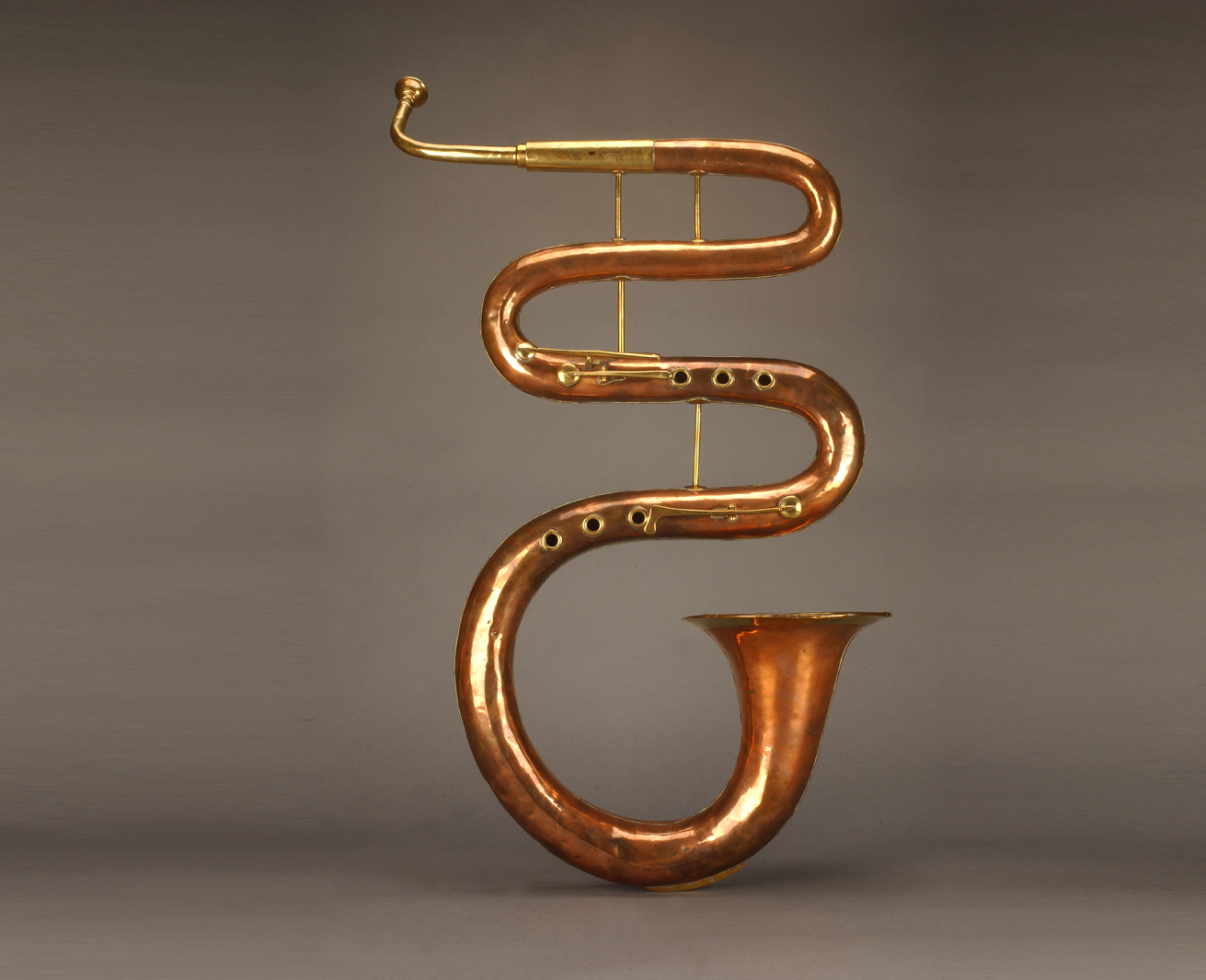The Brass Ancestor

Music has played a huge role over many centuries in defining generations, places and time periods – but have you ever wondered about the history of modern day instruments? One instrument that most people probably have not heard of is the Ophicleide.
Introduced in the early 19th century, the Ophicleide is said to be a predecessor to the modern tuba, and looks like a cross between a baritone saxophone, a keyed bugle and a tuba. The word “ophicleide” in Greek literally means “serpent with keys.” The Serpent was a wooden instrument that was uniquely twisted into an s-shape but played by a mouthpiece like a horn or trumpet. As early as the 1500’s, the Serpent was the bass of the brass family and was almost exclusively used in the church and high mass. To make this instrument easier to play, the Ophicleide was invented.

Unlike the Serpent, the Ophicleide was introduced immediately into the orchestra. Its most prominent introduction into the classical music world was in Berlioz’ Symphonie Fantastique, composed in 1830. In this mystical piece, Berlioz invoked two Ophicleides and four Bassoons to chant out one of the most well-known and haunting classical melodies, Dies Irae, the song of the dead. Check out the video to hear the Ophicleide’s sound, and the Dies Irae, live!
On February 6-8, the enchanting sounds of Dies Irae can be experienced along with the rest of Berlioz’ revolutionary Symphonie Fantastique at the Renée and Henry Segerstrom Concert Hall. Conducted by Maestro St. Clair and performed by Pacific Symphony, this incredible concert will also feature guest artist Alain Lefèvre for a musical experience you do not want to miss. Learn more here!
Emma Ballen is a Senior at Chapman University, studying Business Administration, and is currently an entertainment host as Disneyland, interning with the Symphony’s Marketing & Public Relations department.

Wow, some very interesting information here. Thanks for sharing. Looking forward to reading more!